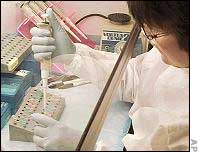SERIAL KILLER MYTHS EXPOSED - Myth Ten

Our present methods of catching serial killers work
Yes, we have finally caught the Green River Killer. Only 48 (give or take) women later, we have him in custody. Fifty-four year old Gary Ridgway enjoyed his decades of free reign and now he will hardly suffer all that much in his later years since the prosecution handed him a life sentence on a silver platter. God knows how much money was spent on the investigation by taxpayers while one woman after the other was brutally murdered by Ridgway. I don't know how you view success, but, if a private business failed to accomplish its mission 48 times over, I would think they wouldn't be in business long.
The typical scenario in a serial homicide investigation follows a well trodden path. First, the police try not to let the public know there is a serial killer out there. If they get lucky, there will be only a small paragraph in the local paper and within a short time, everyone will forget about the murder. Then, hopefully the killer will move to another jurisdiction. If he doesn't stop killing in your jurisdiction, just keep denying that the string of murders in your community are linked. Before DNA actually linked the death of five women in
When the citizens start to get surly like this, then you hold a bunch of news conferences and say law enforcement is doing everything possible and you guarantee this guy is going to be caught
Finally, as time goes on and the killer doesn't get caught, don't worry. No one will remember that promise. Eventually people will even forget a serial killer is on the loose. Fear fades away and we go on with our lives.
Multiply this scenario across the nation and you can see why there are far more serial killers out there than most people realize.
Bobby Joe Leonard might have been working in your office building or picnicking at the table next to you in the park. He might have been planning to knock on your door the very morning the police showed up. You might never know how close you came to being a victim of a serial killer.
There are many more serial killers living outside the prison walls than inside. Until we improve our methods of catching and convicting these predators, we can "safely" assume one of our neighbors is the real Hannibal Lector you should be on the look out for.
Pat Brown is a serial killer profiler and the author of Killing for Sport: Inside the Minds of Serial Killers









